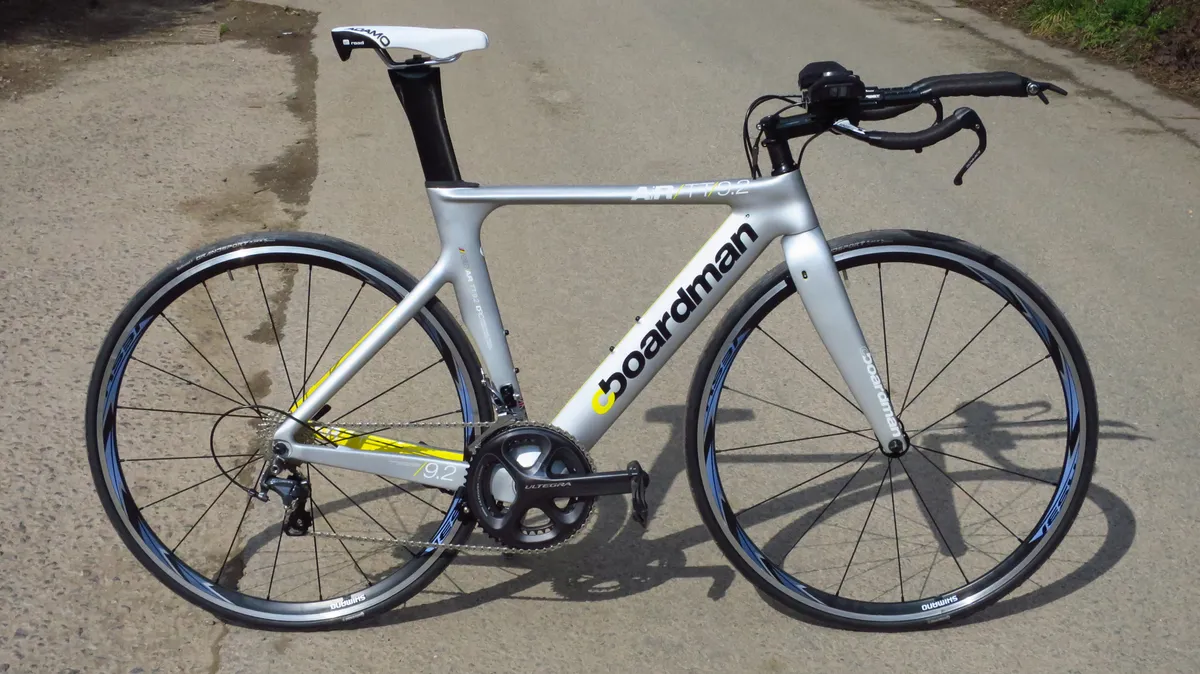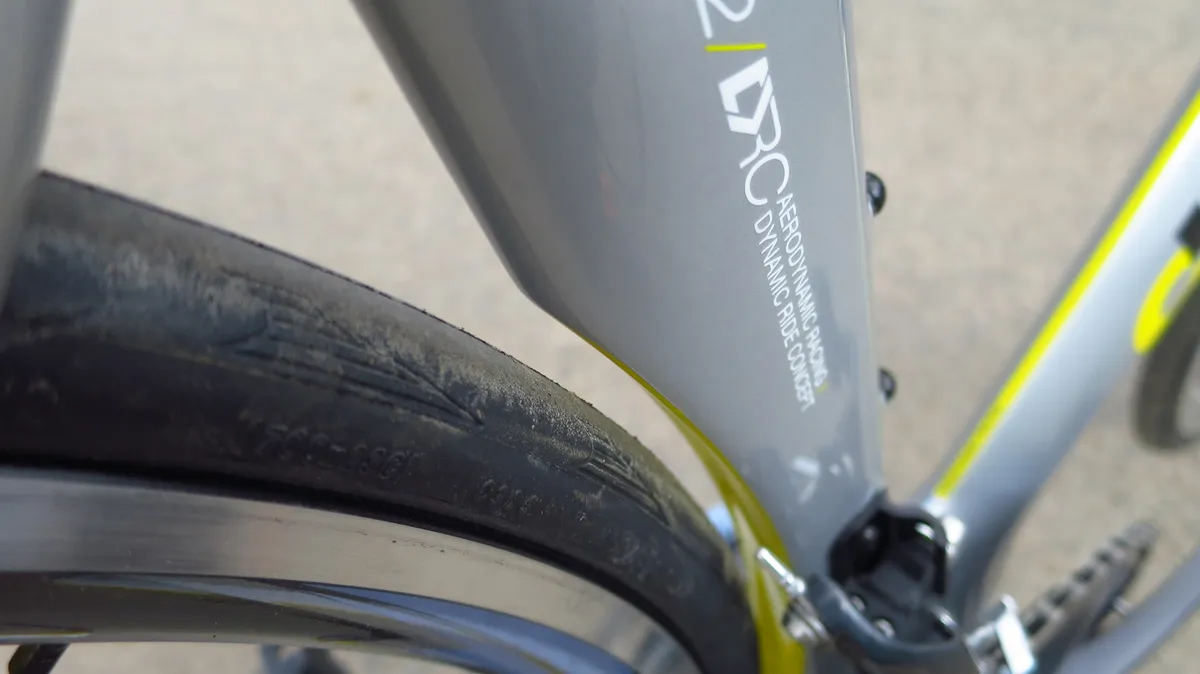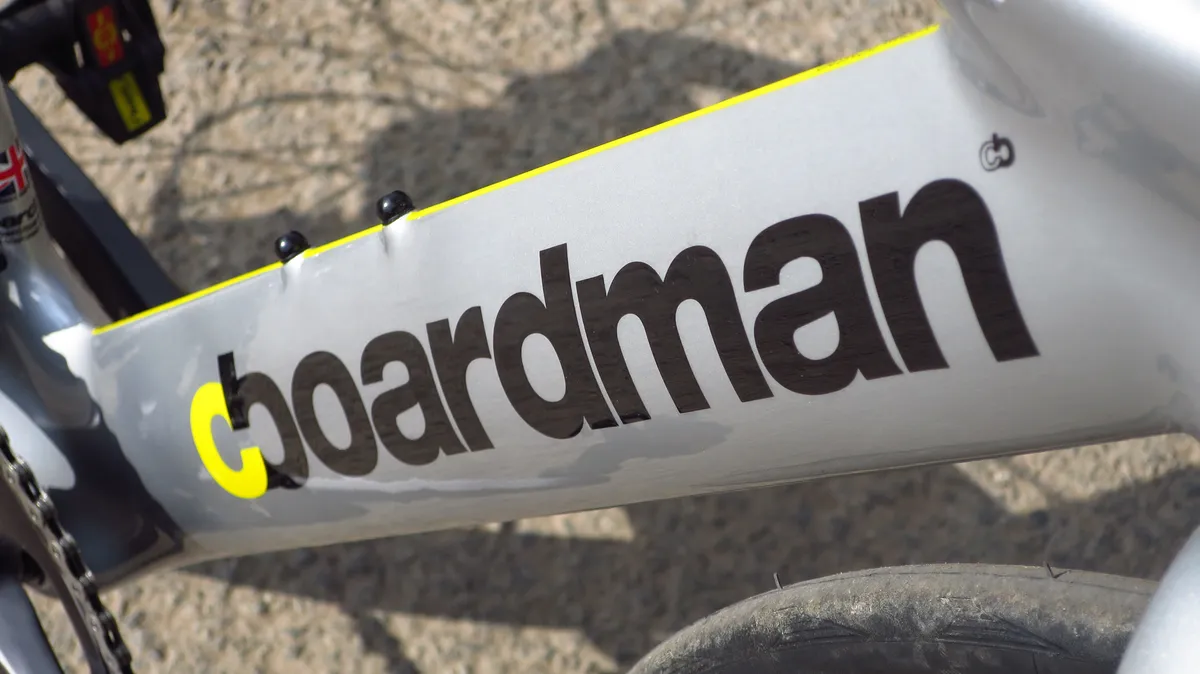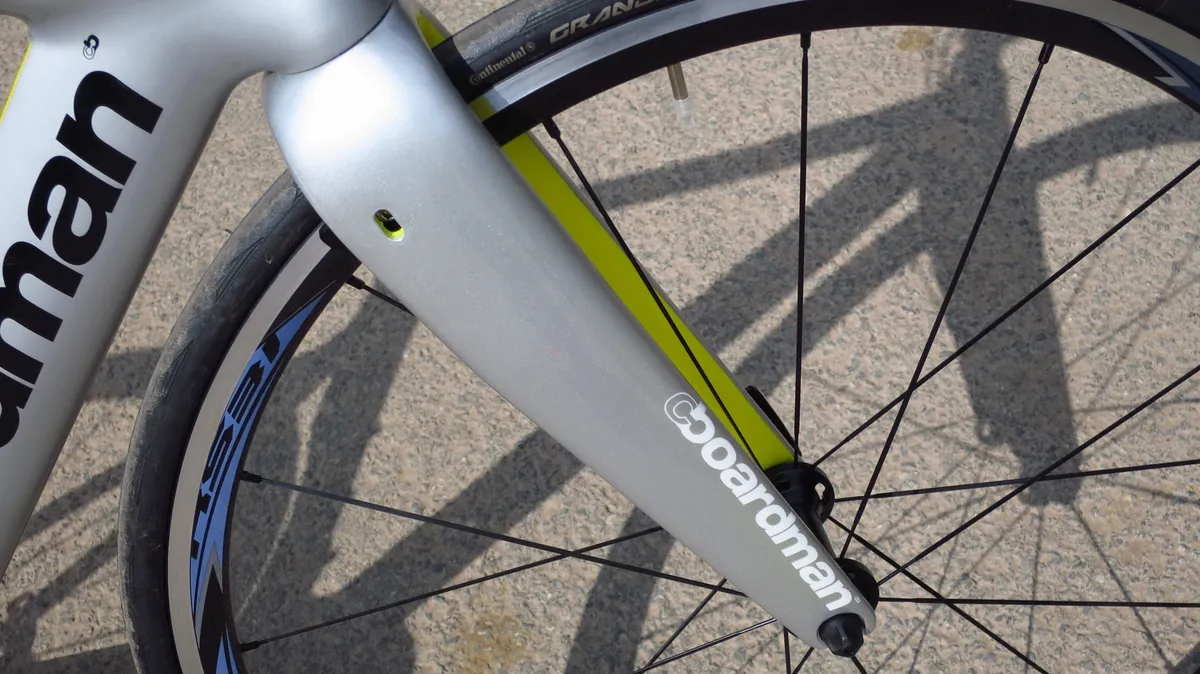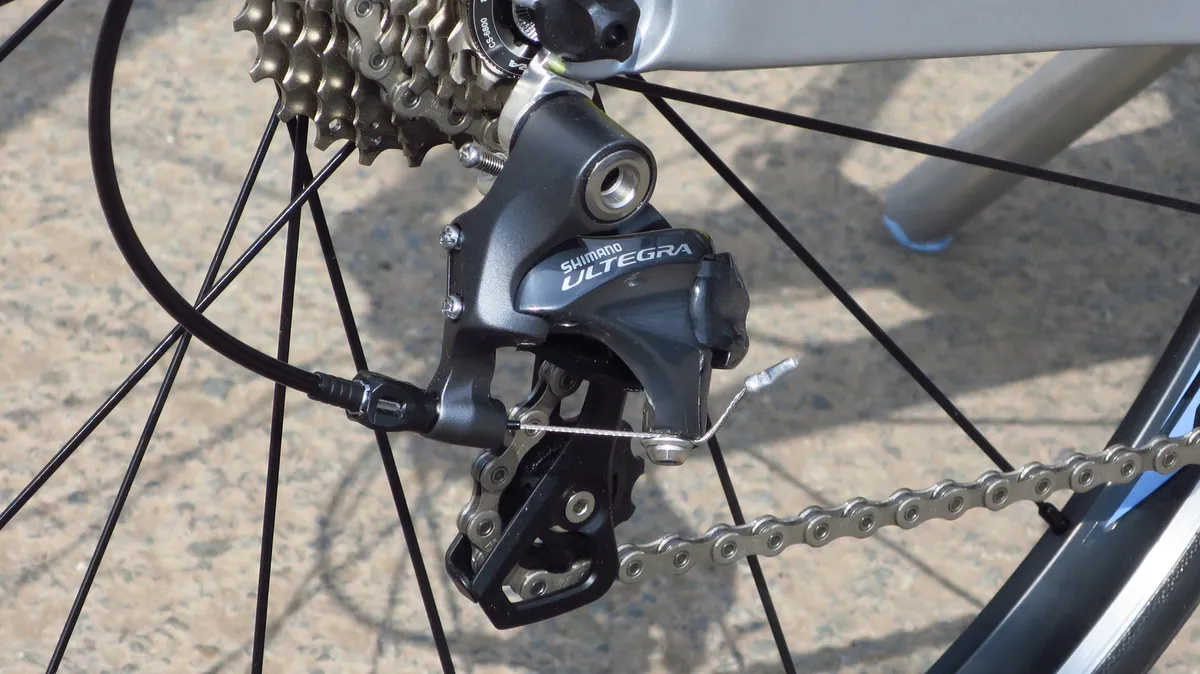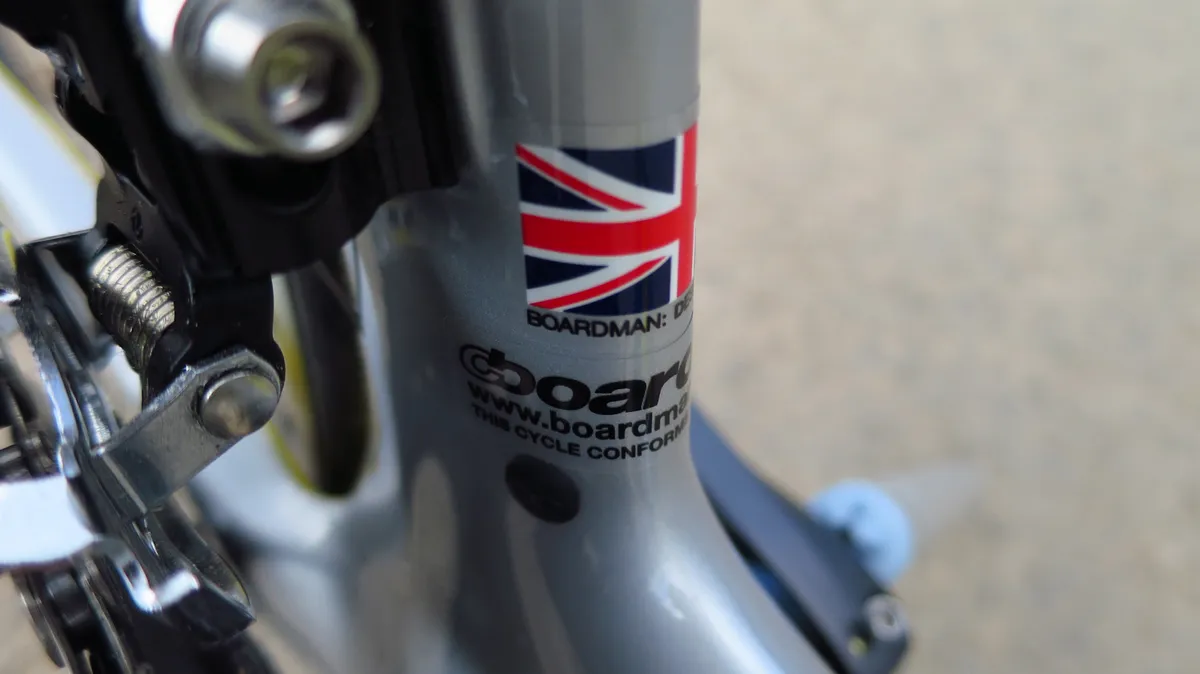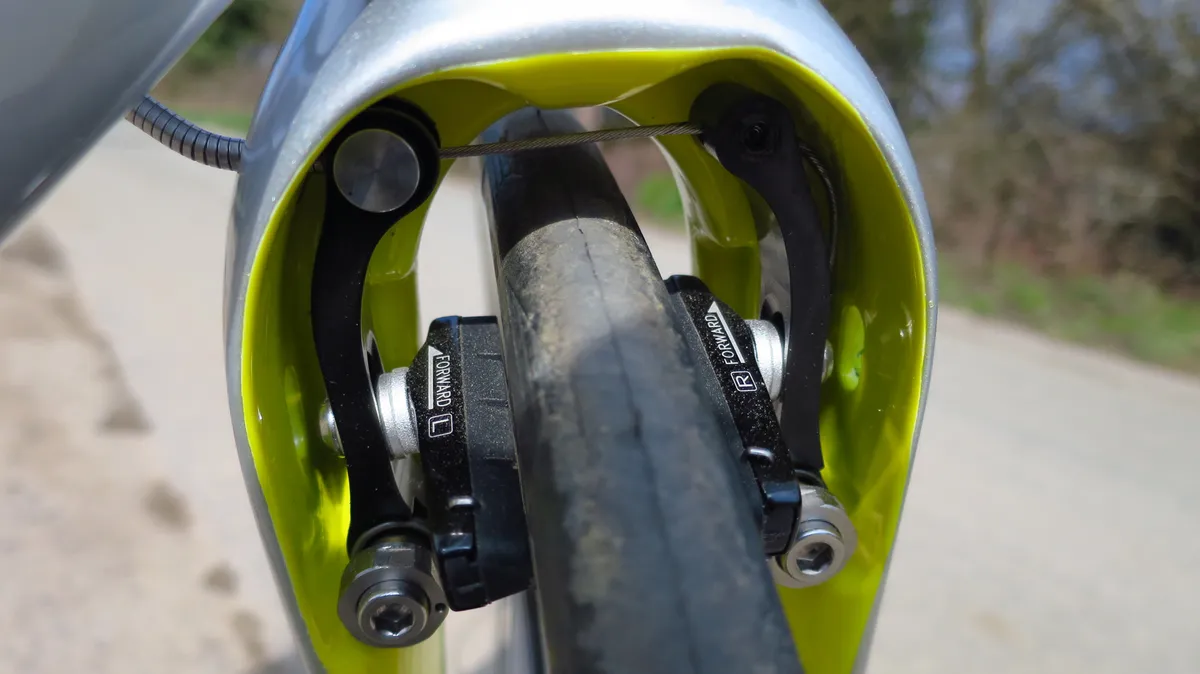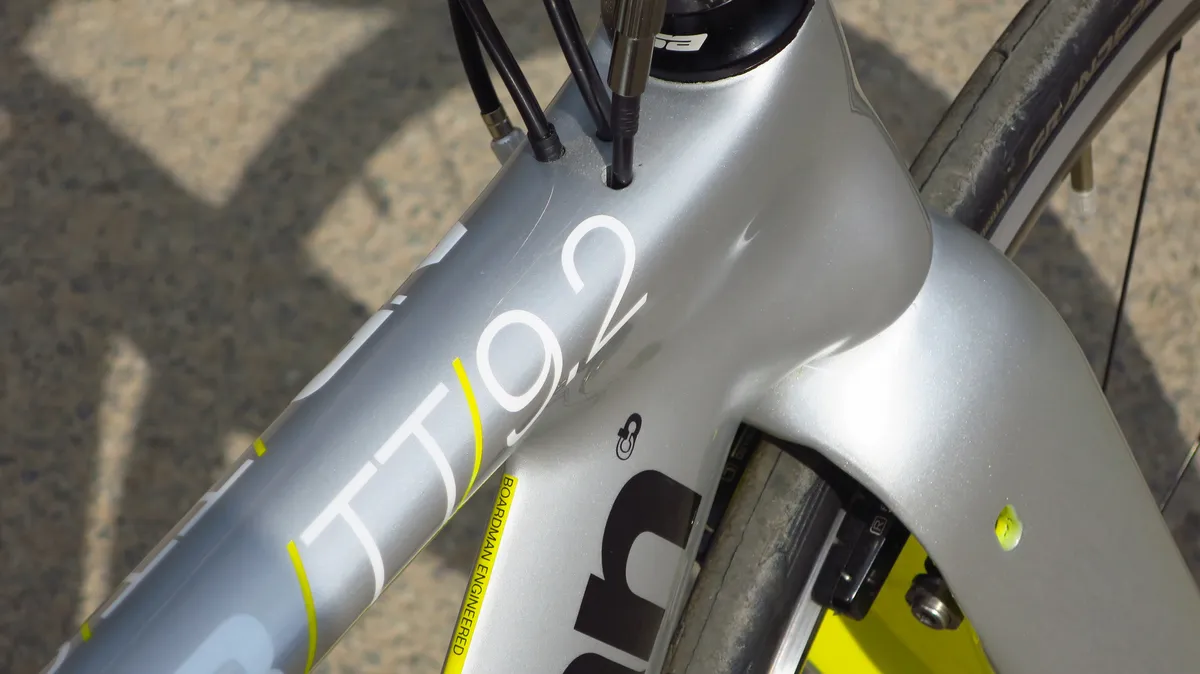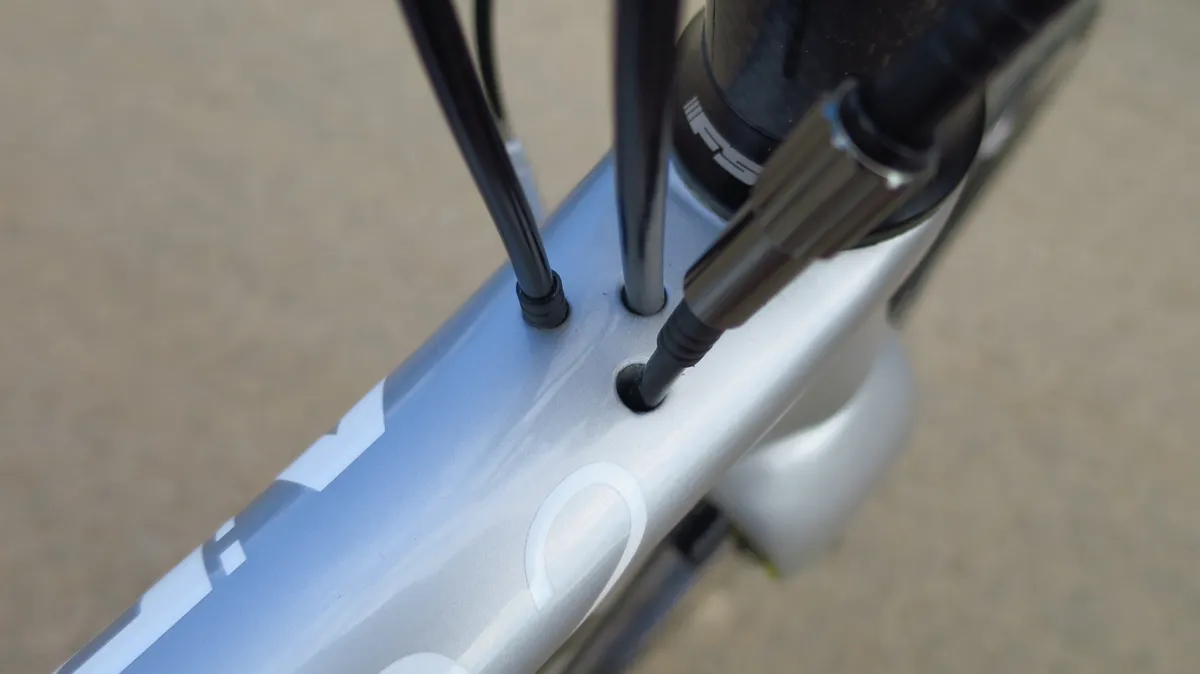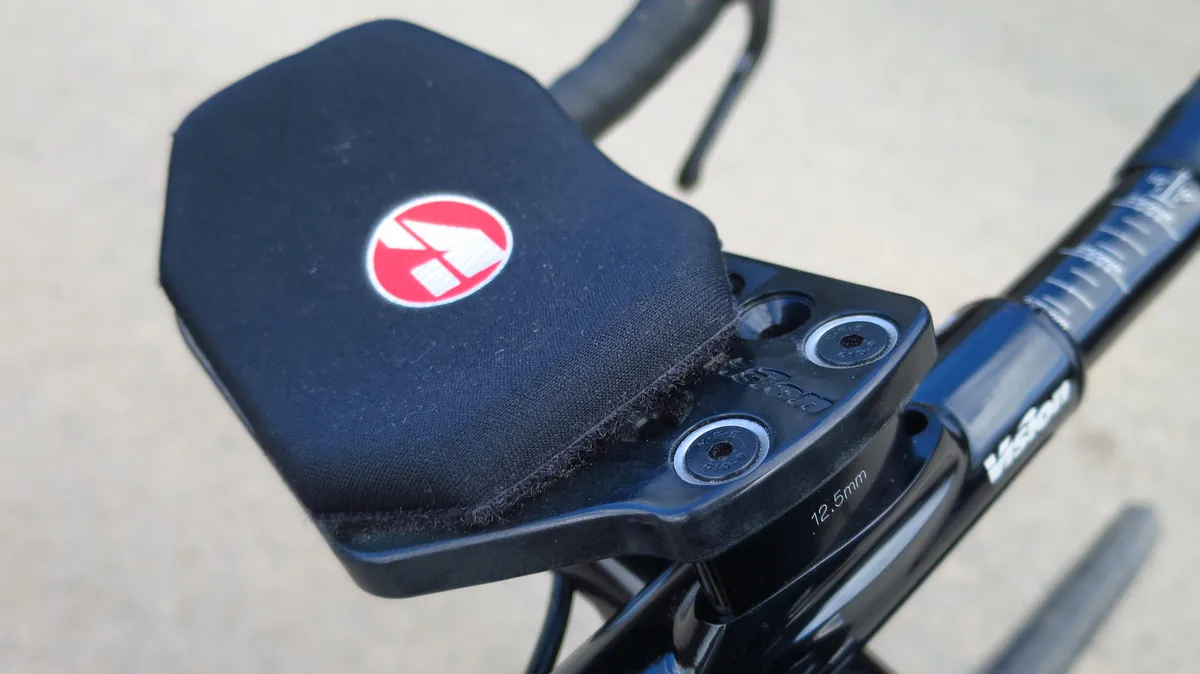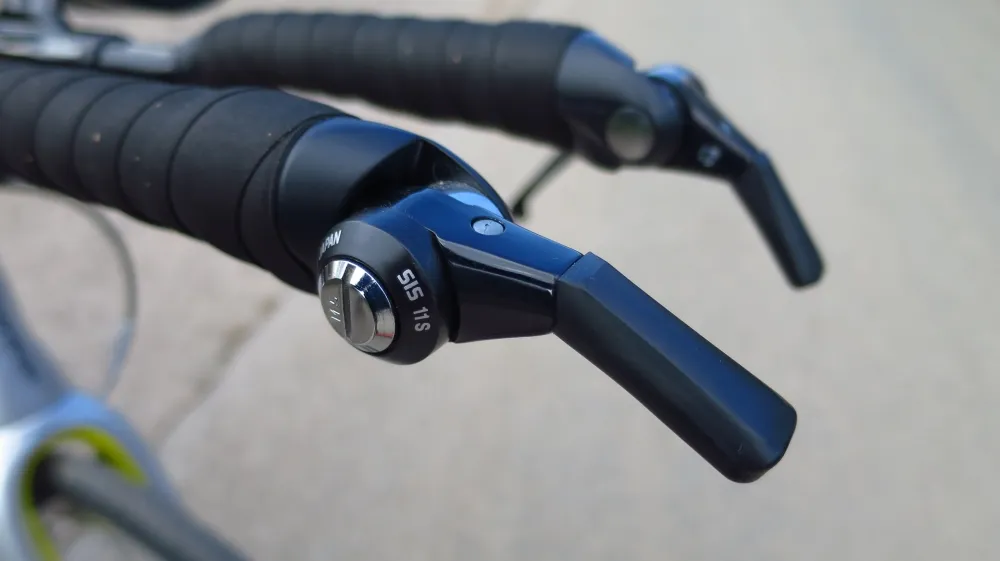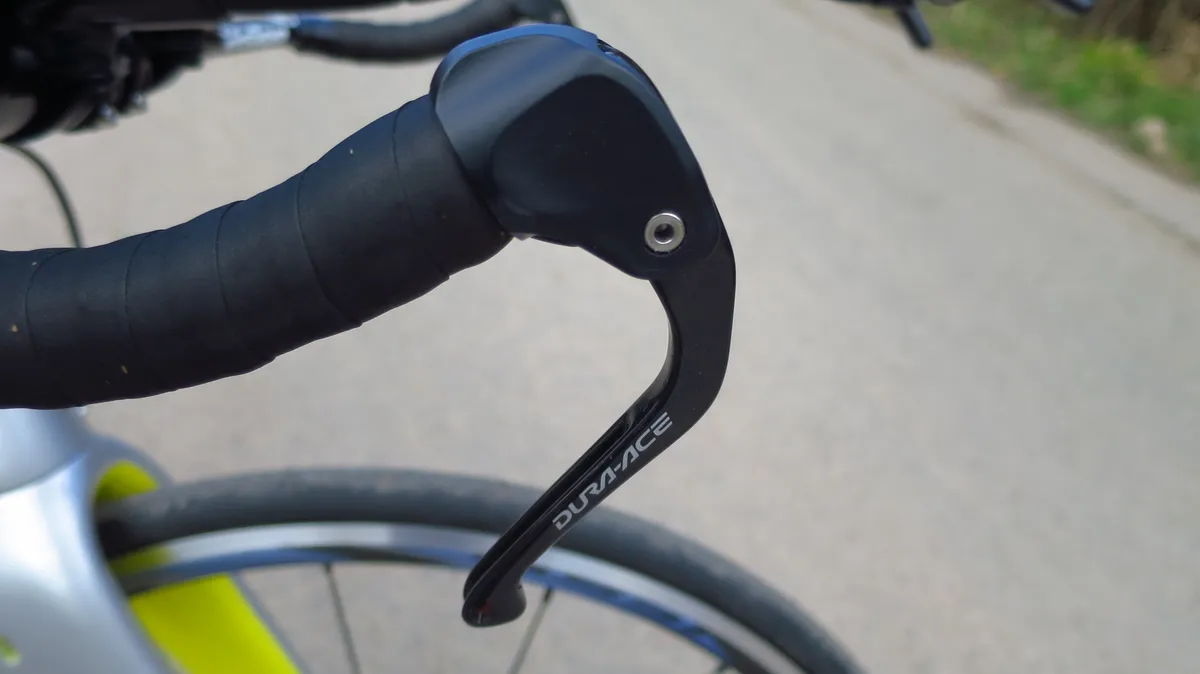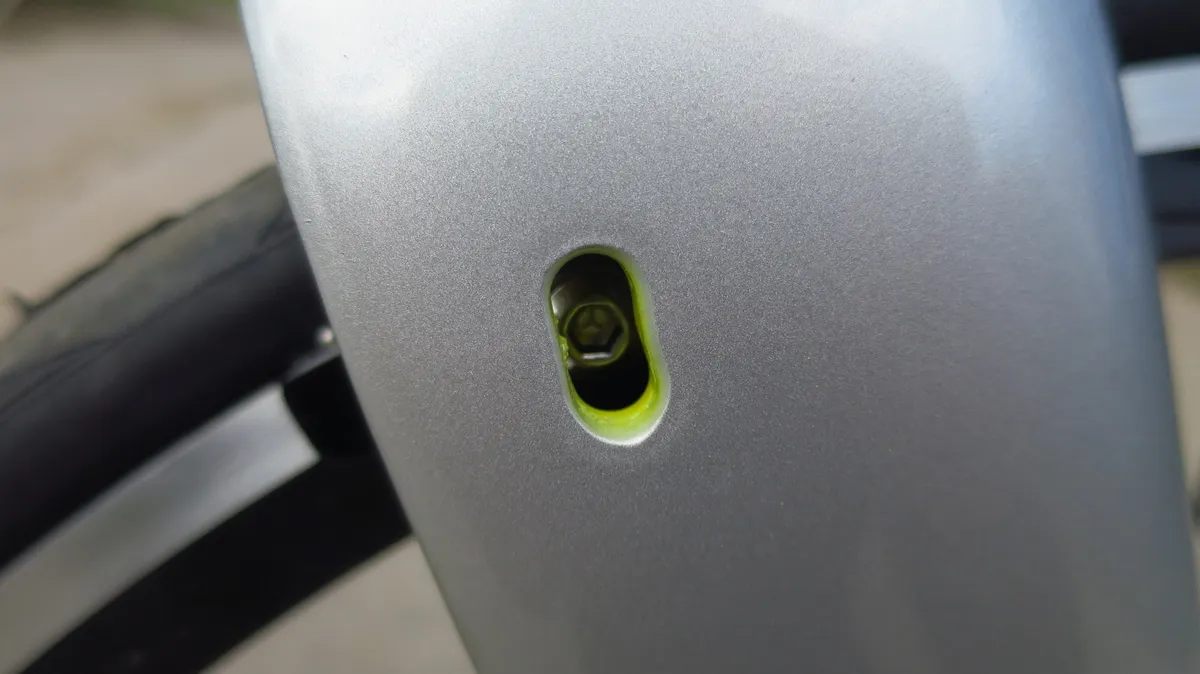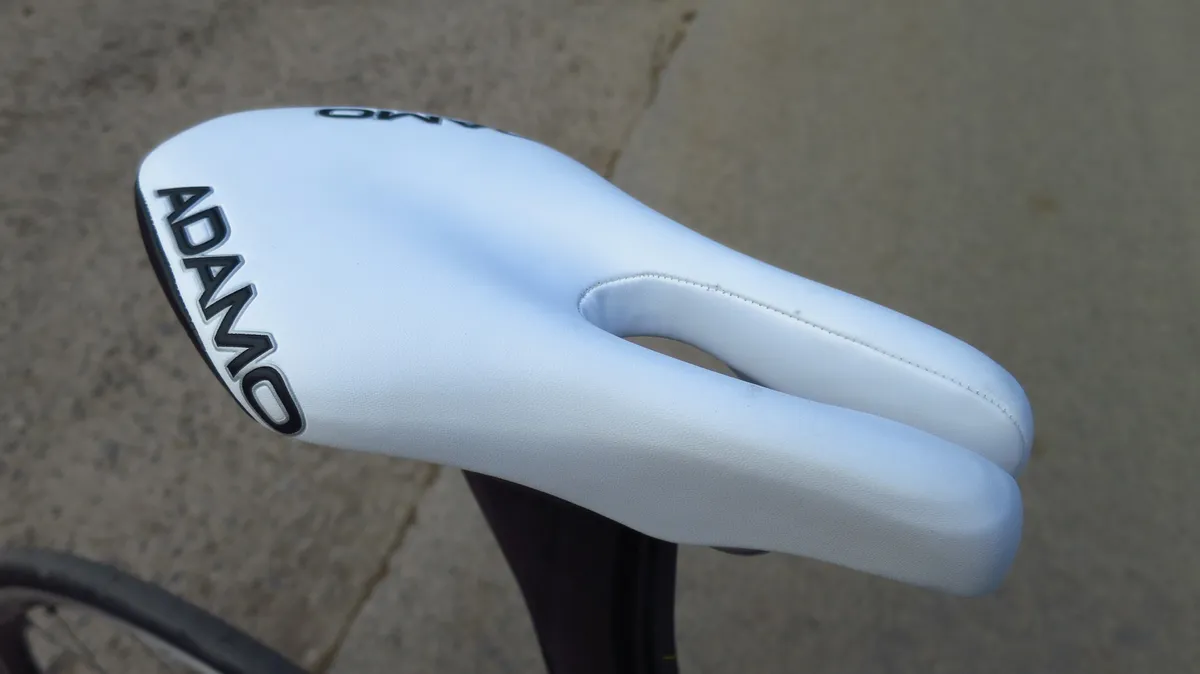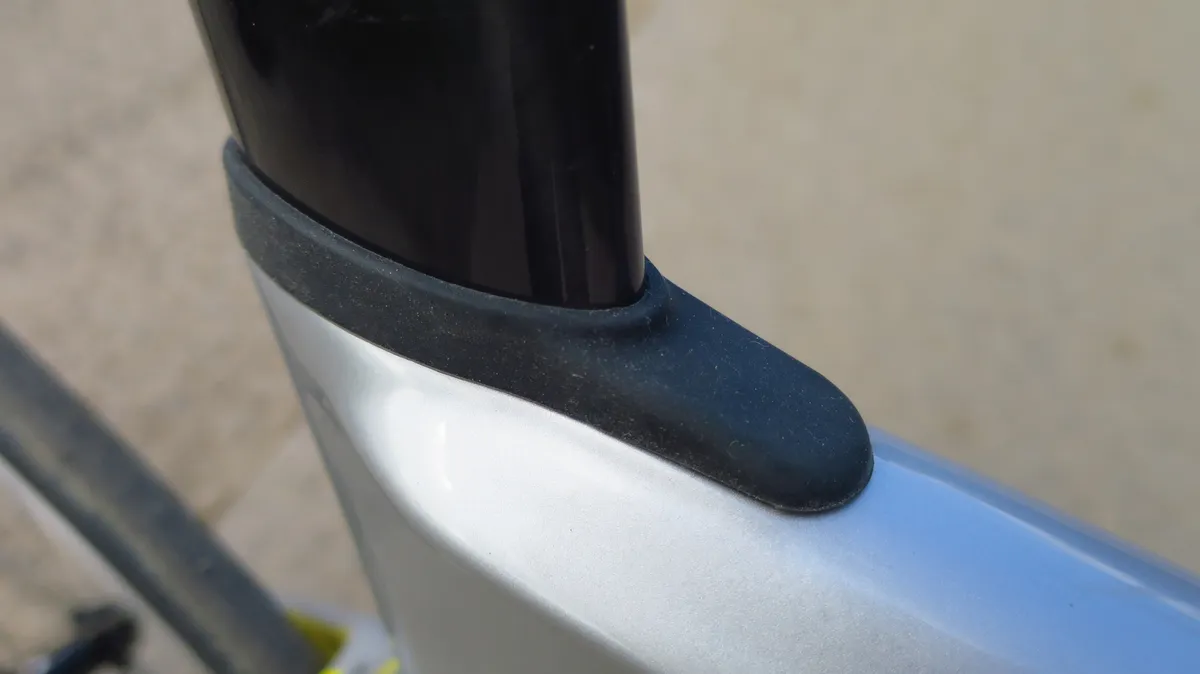As a rider, Chris Boardman was synonymous with beating the clock at dizzying speed aboard industry-leading bikes, so it’s not too much of a surprise that the Boardman AiR/TT 9.2 is a fast machine. What is a bit of a surprise is just how good an all-rounder it is – easy to handle, comfy and a whippet up climbs.
The AiR/TT 9.2 sits between the Shimano-105 equipped 9.0 and the Ultegra Di2-specced 9.4 in the Boardman TT bike range (there's also a frame only 9.8). You get a full Ultegra mechanical group, hardy Shimano RS31 wheels, Vision bars and an ISM Adamo saddle. All that is specced around a carbon frame that loses nothing in terms of lay-up, quality or weight compared to more expensive models in the range.
- Highs: Fast, stiff, easy to handle, climbs well
- Lows: Fiddly brakes, limited cockpit adjustment with stock bars
- Buy if: You want a fast TT / tri bike based around a fantastic frame
Ride and handling: Fast, stiff, comfy – pick three
In the world of TT bikes, compromises have to be made. Weight, comfort, stiffness, control and aerodynamics are all put into the mix and the resulting machines can vary drastically.
TT bikes are designed for speed and the Boardman certainly doesn’t disappoint in this department. From the first few pedal strokes, it’s clear just how stiff the frame is. The speed at which the bike turns a light canter into a full-on gallop is instantly impressive – give it a whiff of power and it really screams along.
Drop onto the extensions and things become even more satisfying thanks to the bike’s ability to hold speed with minimal effort. What’s even more bewildering is that it feels so damn fast with Shimano’s dependable, but weighty, RS31 alloy training wheels. Slap a pair of deep-section rollers in and it really flies.
That sensation of speed doesn’t falter when the road turns upwards either. In fact, the 9.2’s biggest and most pleasant surprise is that in building such a solid, stiff base – a broad BB30 bottom bracket and muscular boxy chainstays – Boardman has also crafted that that most rare of creations: an aero machine that climbs superbly.
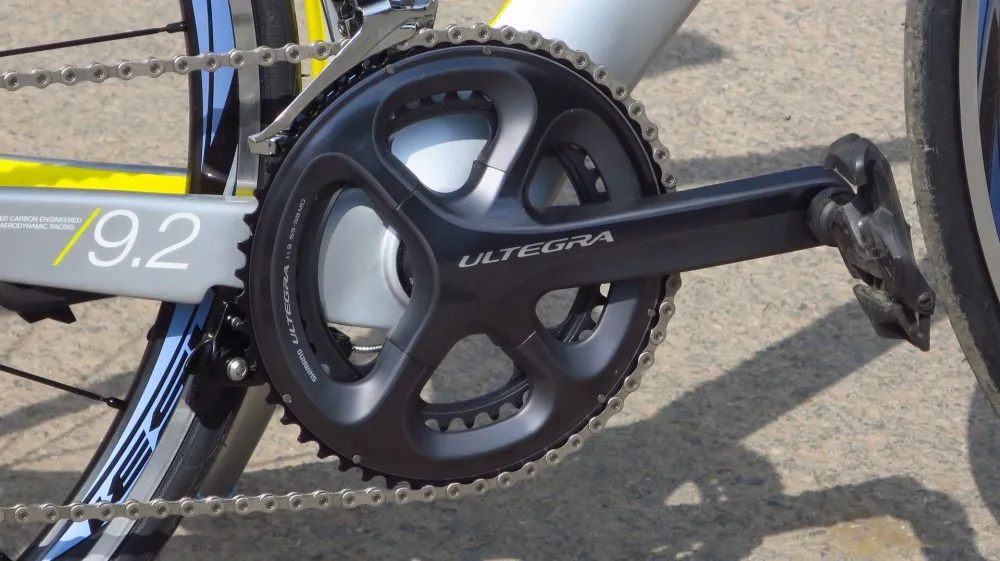
The boxy BB and chainstays help maintain stiffness in the face of aero speed
A combination of that strength in the back end of the frame and the momentum-holding aerodynamics means that it dispatches uphill sections of rolling courses with almost absurd ease. At 8.9kg with those RS31 wheels, the 9.2’s no lightweight, but it really feels like it is – proof that good design and a quality frame are more important than the stats. The supplied 39t front, 25t rear gears, a bail-out ratio that initially worried us for general use, barely got a look in.
On tougher climbs, it also grinds strongly away, rather than with the lossy flexibility that many aero bikes suffer from. However, get out the saddle with a vice-like grip on the bars and they do flex enough to make you want to sit down again. Nevertheless, if hilly time trials or triathlons are your thing, it should certainly make your shortlist.
Some TT bikes feel precarious to be upon and make simple actions like making signals feel a bit like there’s only one wheel under you rather than two. Right from the off though, it’s clear the Boardman isn’t a perilous ride. The bike’s 72.5 degree head tube angle mirrors that of Cervelo’s bikes and it handles well; gentle movements and leaning while on the extensions allow easy navigation around potholes and the like without twitchiness.
It’s not corner-averse either. Slip your hands on to the outside of the bullhorns when cornering and the bike’s agility shines through. It expectedly veers a little wider than most road bikes when tackling roundabouts at speed for example, but responds smoothly to steering input and remained composed and stable no matter how twisty a section of road we pointed it towards.
Many integrated brakes are lacking; the whole spectrum usually ranges from utterly crap to average. While the Boardman’s brakes – integrated into the rear of the fork and under the chainstays at the BB – aren’t on a par with the latest direct-mount rim brakes, the TRP-designed stoppers actually do stop you (a couple of low-speed endos during testing were testament to this).
Yes, they're less powerful than traditional brakes, but what’s there is consistent, smoothly modulated and free from grabbiness. There was no worry about the ability to slow before bends once used to them. Try as we might, we were unable to completely eliminate a small amount of slackness in the front brake, which meant a tiny bit of lever movement before pulling the cable. It didn’t cause any problems though – the pads bit into the rims with plenty of travel left.
On windy days, the Boardman bears up well. In blustery 20mph conditions, sudden sideways gusts forced us off our line, but not across the road and didn’t induce white-knuckle panic from a loss of control thanks to the bike’s generally sound stability. This good tolerance to crosswinds is partly down to the relatively low profile wheels that come as stock. A deeper pair were a little sketchier, but a not untameable.
More often than not with TT bikes, any comments regarding comfort need suffixing with ‘for a tri bike’, but that’s not the case with the Boardman. Despite the stiffness, the Boardman’s frame design – in cahoots with the well-padded Adamo saddle and plush armrest pads – makes it more compliant than most bikes in this category. You wouldn’t want to take it down a cobbled lane, but pitted surfaces seemed less of an annoyance than the continual fatigue-inducing battering that can often torment with ultra-stiff time trial machines.
The only real barrier to comfort here is that the Vision Trimax bars feature extensions with a slight S-bend that necessitates a kinked-wrist grip. Given time and an upturned angle, you do get used to them. It’s probably a little more aero, but you might want to swap in deeper S-bends for long-ride ergonomics.
Frame: High-end carbon with bags of upgrade potential
Virtually all of the ride qualities mentioned above are down to the Boardman’s superb frame. CFD designed in the UK by Boardman’s R&D department and validated in the wind-tunnel, the frame of the 9.2 (and 9.0, 9.4 and 9.8) is based on the development of the range-topping AiR/TTE.
The 9.2 offers a less integrated, but arguably more practical frameset than the TTE, which is suitable for use with a regular stem and bar setup. Like every bike in the Boardman Elite range, it does get the top-quality carbon. That not only makes it eminently upgradeable, but avoids the feeling that you're being forced into buying a lower quality frame as with most other brands.
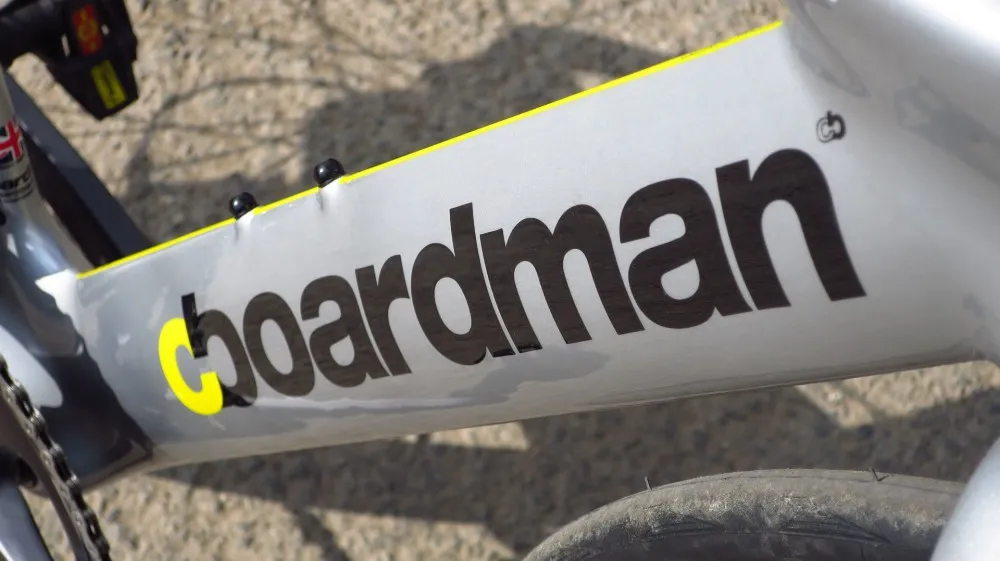
The bike uses deep, aero tubing, but maintains its stiffness
The bike is UCI legal in its design. The down tube is a traditional teardrop shape with a narrow, straight-edged back. There’s no front wheel hugging design here, which may well aid the front-end stiffness. The 95mm head tube allows a big saddle-bar drop should you want an aggressive position.
The bottom edge of the top tube is perfectly straight while the top edge kinks up slightly toward the head tube. The top tube is also wider than the seat tube, with narrow ribs either side running into the seat tube junction, which curves smoothly downwards, hugging the rear wheel then meeting a large bottom bracket area.
From here, broad rectangular chainstays stretch to horizontal rear dropouts, which don’t feature any adjustment to tune the wheel’s distance from the hugger. The seatstays are much thinner than the chainstays and in keeping with current aero trends, attach fairly low down on the seat tube.
The aero seatpost has a four-point mounting system, allowing a wide fore-aft saddle range. The forward-most position gives an effective seat angle of 79 degrees and that means a running-friendly triathlon position is easily attained. You won’t be able to get the tips of the ISM Adamo over the BB, however, so if you desire a really, really forward-focused setup, you may need to look elsewhere. If you use a more traditional saddle type however, bear in mind that ‘noseless’ designs are meant to be set back compared to normal saddles anyway.
Under the hourglass-shaped head tube, the tapered fork looks almost comically wide from front on. Those broad, aero fork legs hide the front brake from the wind – a V-brake style TRP setup mounted into a recess in the middle of the fork. There are also two access holes allowing easy pad adjustment. The right-hand leg (from the front) also features a cable-entry point for the brake. This is something to be aware of in terms of routing from the levers – in drive-on-the-left territories, the cable has to sweep across the front of the head tube then down and into the fork. In the US, it’ll kink out of the bars and straight into the fork.
On the subject of cabling, the gear and rear brake cables enter the top tube just behind the head tube and run with outers throughout the frame. This is a little different from Boardman’s aero road bike, which has internal guides for the cables themselves. The rear derailleur cable pops out of the chainstay a few inches ahead of the dropouts. There’s no seal on the cable routing behind the stem, so it might be wise to stick some Sugru or similar on there to avoid water ingress.
Finally, it’s worth noting that you can get the AiR/TT as a frame-only package for £1,800 / US$2,500 / AU$TBC. Then again, you can also get the AiR/TT 9.0 with exactly the same frame, Tiagra, an FSA Omega crankset and Shimano RS501 wheels for £2,000 / US$2,800 / AU$2,499.
Equipment: Simple and dependable mechanicals
Bike fitting is always important and that’s never more true than with a TT bike. It’s great to see the ISM Adamo saddle specced here – it’s the go-to noseless perch for time trialling and a great start for a good fit. If you’ve never tried one, persevere and you’ll be rewarded with a powerful, comfortable open hip angle. One oddity with the Boardman's seat clamp is that it requires a 13mm spanner to do up the nut, so make sure it's tightened adequately before riding – there aren't many spanner-equipped multi tools.

The Vision TriMax cockpit lacks the position fine tuning some riders may crave
The Boardman gets a fairly standard alloy Vision TriMax cockpit, secured by Boardman’s own alloy stem. As clip-ons bolted to a base bar, the problem of the aforementioned almost-straight extensions can’t be alleviated by angling the pads – both are fixed together on the same plane. Being clip-ons, there is however a useful amount of extension width adjustment built in, along with some basic pad rotation and positioning. You can also change the extension length and rotation easily via a small grub screw.
The 95mm head tube of our size small test bike means a low position is easily attainable, but Vision only provides one 12.5mm pad spacer and advises against adding more. This means that those seeking a more back saving fit will have to adjust height by flipping the stem and rearranging the stack of headset spacers. Vision claims a round stem flipped upwards is more aero than a flat one. None of this is uncommon with TT bike setups, but is something to be aware of.
The Shimano Dura-Ace bar-end shifters change with flawless familiarity, the manual trimming of the front derailleur giving the setup a satisfying tactility as you eliminate any chain rub with a tweak of the lever. It all just works and is easily serviced.
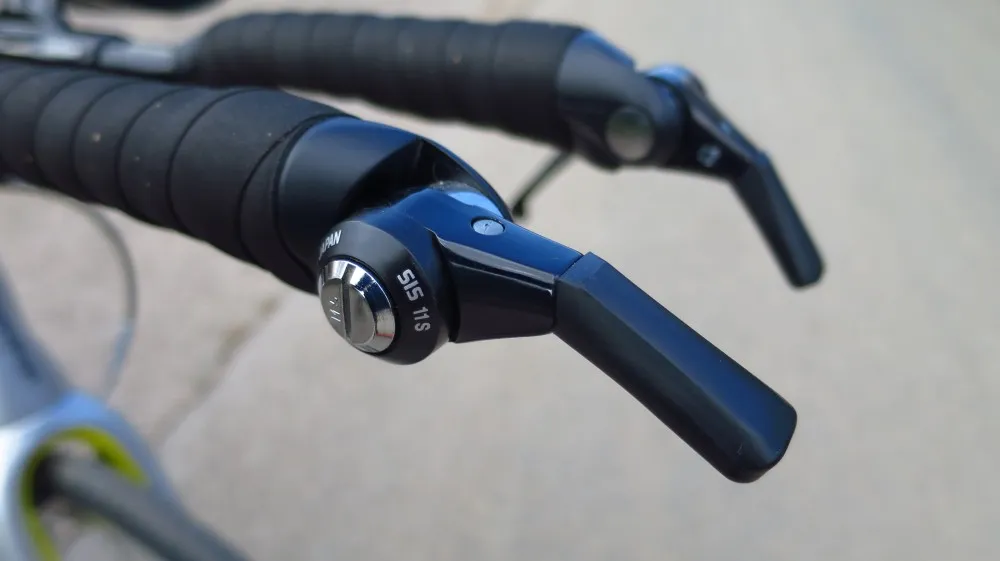
Still doing the job: Shimano's Dura-Ace bar-end shifters are mechanical perfection
On the other hand, there’s no denying that Di2 is currently the best gearing system for TT bikes – being able to shift on the brakes as well as the bar ends is practical and a performance enhancer, plus there are no levers to waft in the wind. However, it’s an extra £700 / US$1,700 to upgrade to the Di2-equipped Boardman AiR/TT 9.4 – and that’s without the satellite shifters on the brakes. Even if you’ve got that extra cash, your money would likely be better spent on a new set of race-day wheels or a more adjustable cockpit.
The Ultegra crankset is implemented via adaptor bearings to narrow the 30mm PF30-designed bottom bracket to Shimano’s 24mm standard. It’s a beauty – stiff, smooth and with utterly reliable shifting.
Likewise the RS31 wheels have proved dependable, making for unflustered training even if they don’t really do a frame of this quality justice for racing. The Continental Ultra Race tyres roll, grip and wear well.
Equipment-wise, the spec seems spot on for the price compared with most of the big brands.
Final thoughts
The Boardman AiR/TT 9.2 is an easy bike to fall in love with. It’s undeniably fast and unyieldingly stiff while retaining comfort. It also feels lighter than it is, devours rolling courses and never fails to put a smile on your face. All that wipes away any other niggles. The top-end carbon in the frame makes it ideal for upgrades, but you really need only add some deep section wheels for a superbike feel.
